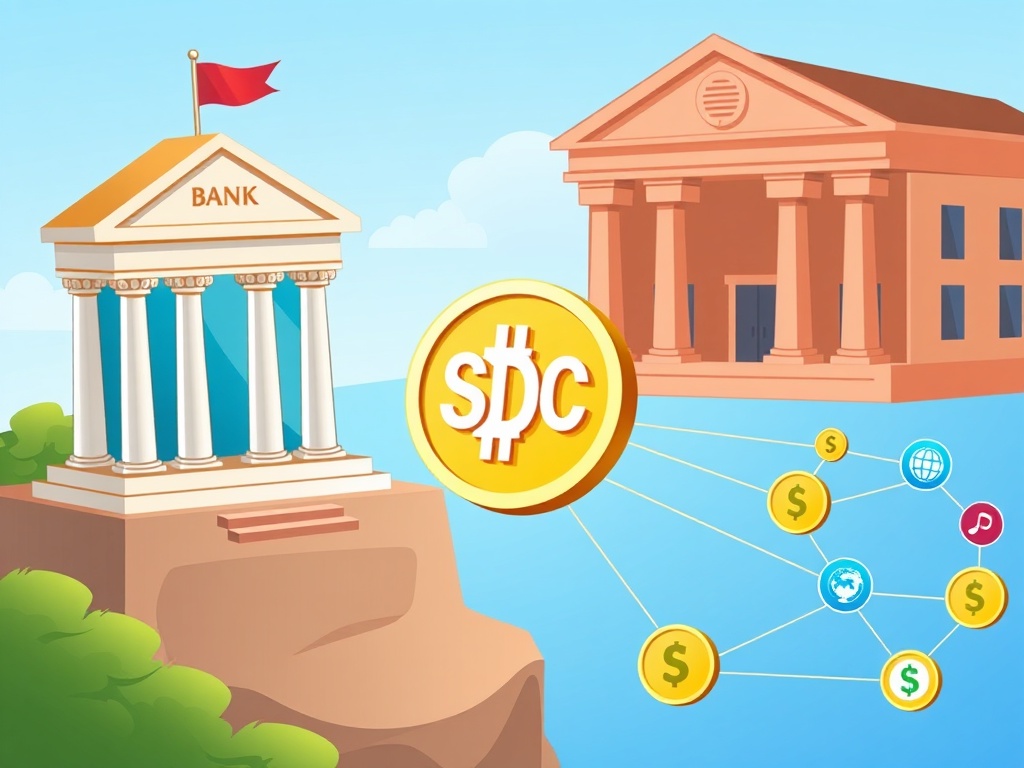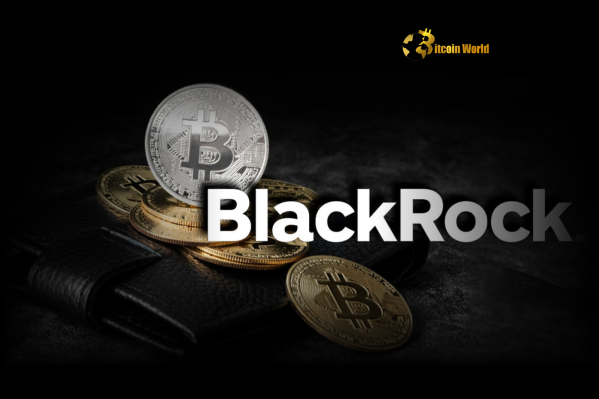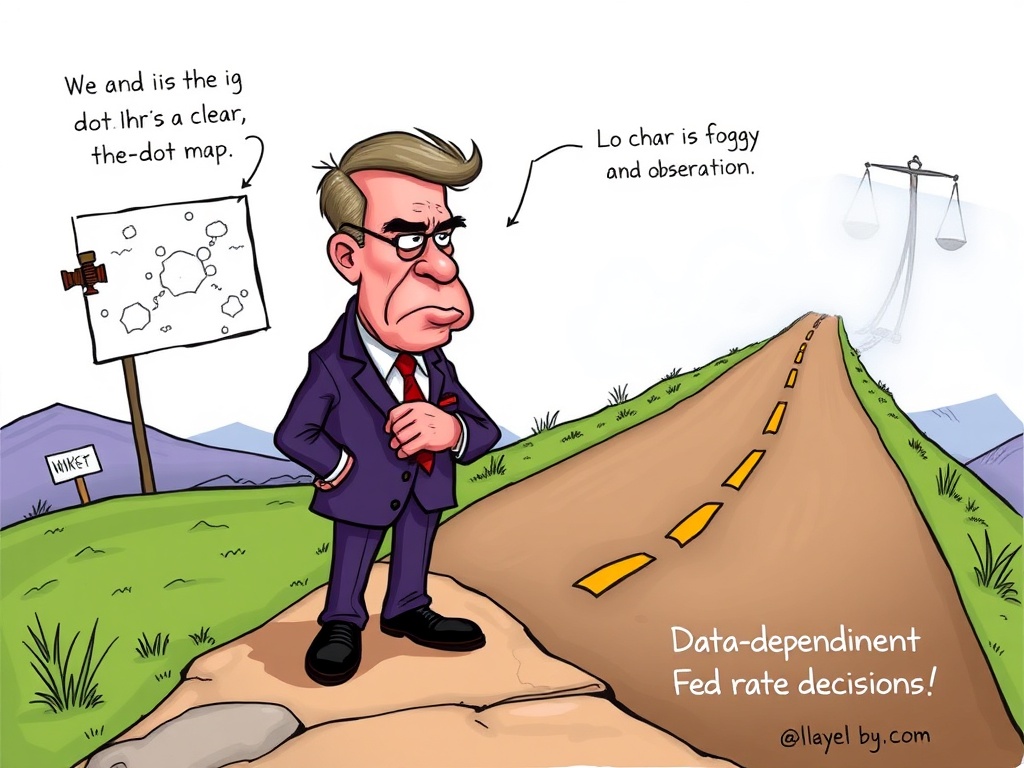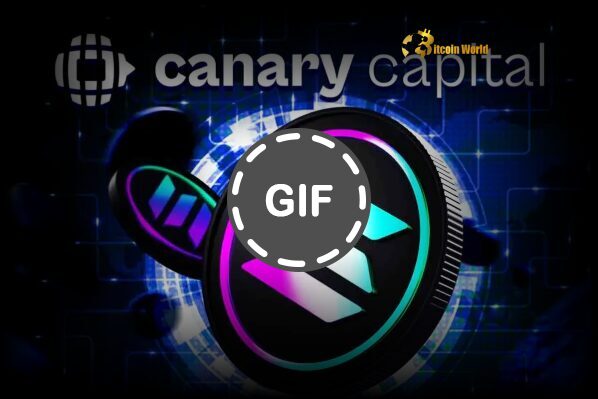BitcoinWorld

USDC Stablecoin: Revolutionary Partnership Unlocks Global Payment Access
The financial world is undergoing a seismic shift, driven by technological innovation and the increasing demand for faster, more efficient, and globally accessible payment solutions. At the forefront of this evolution are stablecoins, digital assets designed to maintain a stable value, typically pegged to fiat currencies like the U.S. dollar. Among these, USDC stablecoin stands out as a leading contender, known for its transparency and regulatory compliance. In a move poised to significantly accelerate the mainstream adoption of digital currencies, Circle Internet Group, the issuer of USDC stablecoin, has announced a groundbreaking partnership with Fidelity National Information Services (FIS), a colossal name in bank technology. This collaboration isn’t just news; it’s a pivotal moment that could reshape how financial institutions interact with digital assets, making stablecoin transactions more accessible than ever before.
What Does This Partnership Mean for USDC Stablecoin Adoption?
This strategic alliance between Circle and FIS marks a significant bridge between the traditional financial system and the burgeoning world of digital assets. FIS, with its extensive reach and established infrastructure, provides technology solutions to thousands of financial institutions globally, from small community banks to multinational corporations. By integrating USDC stablecoin transactions directly into FIS’s money movement hub, the partnership effectively opens a vast new avenue for stablecoin utility. Imagine financial institutions, previously hesitant to engage with cryptocurrencies due to perceived complexity or regulatory uncertainty, now being able to seamlessly facilitate USDC transactions through their existing, trusted systems. This dramatically lowers the barrier to entry, paving the way for broader institutional adoption.
The core of this collaboration lies in enabling financial institutions to:
- Access USDC Transactions: Directly send and receive USDC through FIS’s established network.
- Streamline Operations: Integrate stablecoin capabilities into their existing treasury and payment systems without needing to build new infrastructure from scratch.
- Expand Payment Offerings: Offer clients new, innovative payment solutions that leverage the speed and efficiency of stablecoins.
This isn’t merely about adding another payment rail; it’s about embedding a digital native currency into the very fabric of global finance, offering a glimpse into a future where stablecoins play a central role in everyday financial operations.
How Will This Enhance Stablecoin Payments for Financial Institutions?
The benefits of this partnership for financial institutions are multi-faceted, addressing some of the long-standing challenges in traditional payment systems. Stablecoin payments, particularly those powered by USDC, offer distinct advantages that can lead to significant operational efficiencies and new revenue opportunities.
Consider the current landscape:
| Feature | Traditional Payments (e.g., SWIFT) | USDC Stablecoin Payments (via FIS) |
|---|---|---|
| Speed | Days (especially cross-border) | Minutes to Seconds (24/7) |
| Cost | Variable, often high fees | Significantly lower, transparent fees |
| Transparency | Limited, requires manual tracking | On-chain, immutable record |
| Accessibility | Limited by banking hours/weekends | Global, 24/7, programmable |
For financial institutions, this means the potential for real-time settlement, reduced operational overhead, and enhanced liquidity management. Imagine a large corporation needing to move funds across borders; with USDC, this could happen almost instantly, at a fraction of the cost, without waiting for banking hours or dealing with complex correspondent banking networks. This efficiency can translate directly into competitive advantages and improved customer service for their clients.
What Are the Broader Implications for the Future of Digital Currency?
The collaboration between Circle and FIS extends beyond mere transactional efficiency; it carries profound implications for the wider adoption and integration of digital currency into the global economy. This partnership legitimizes stablecoins further within the traditional financial ecosystem, sending a clear signal to other institutions and regulators that digital assets are maturing and becoming a viable component of modern finance.
Key implications include:
- Increased Institutional Confidence: When a major fintech provider like FIS embraces USDC, it lends significant credibility to the asset class, encouraging more conservative institutions to explore its potential.
- Catalyst for Innovation: By providing a robust and accessible rail for stablecoin transactions, the partnership could spur new product development and service offerings within financial institutions, from tokenized assets to innovative lending platforms.
- Regulatory Clarity: As more established players enter the stablecoin space, it often prompts regulators to provide clearer guidelines, fostering a more secure and predictable environment for growth.
- Global Reach and Inclusion: The infrastructure provided by FIS can extend the benefits of fast, low-cost digital payments to underserved markets, fostering greater financial inclusion worldwide.
This move positions USDC not just as a speculative asset, but as a foundational layer for future financial innovation, driving forward the vision of a more interconnected and efficient global financial system.
Addressing Challenges: Navigating the Landscape of USDC Stablecoin Integration
While the partnership heralds immense opportunities, it’s also important to acknowledge the challenges that accompany the integration of USDC stablecoin into mainstream finance. The journey towards widespread adoption is not without its hurdles, primarily centered around regulatory frameworks, security concerns, and the need for ongoing education.
Key challenges to consider:
- Regulatory Uncertainty: Despite progress, the global regulatory landscape for stablecoins is still evolving. Financial institutions must navigate varying rules and compliance requirements across different jurisdictions.
- Security and Risk Management: While blockchain technology offers inherent security, institutions must still implement robust cybersecurity measures to protect digital assets and prevent fraud. Managing cryptographic keys and ensuring secure access are paramount.
- Interoperability: As more stablecoins and digital assets emerge, ensuring seamless interoperability between different blockchain networks and traditional systems remains a technical challenge.
- Education and Training: Financial institutions need to invest in educating their staff and clients about how stablecoins work, their benefits, and how to use them securely. Bridging the knowledge gap is crucial for adoption.
Circle and FIS will undoubtedly work closely with regulators and industry bodies to address these concerns, building trust and ensuring a responsible expansion of stablecoin capabilities. Their combined expertise positions them well to navigate these complexities.
Actionable Insights: Leveraging the Power of USDC Stablecoin for Your Business
For businesses and financial institutions looking to stay ahead in the rapidly evolving digital economy, the Circle-FIS partnership offers compelling reasons to explore USDC stablecoin. Here are some actionable insights to consider:
- Evaluate Cross-Border Payments: If your business engages in international transactions, assess how leveraging USDC could reduce costs and accelerate settlement times. This is particularly beneficial for high-volume or time-sensitive transfers.
- Explore Treasury Management: Consider using USDC for corporate treasury operations to manage liquidity more efficiently, especially for entities with global operations that need to move funds across different time zones.
- Pilot Digital Asset Services: For financial institutions, this partnership presents an opportunity to pilot new digital asset services for clients, starting with stablecoin-based payments or remittances.
- Stay Informed on Regulatory Developments: Keep a close watch on evolving stablecoin regulations in your operating jurisdictions. Proactive compliance will be key to successful integration.
- Invest in Education: Educate your teams and, if applicable, your clients about the fundamentals of stablecoins and their practical applications. Understanding fosters adoption and mitigates risk.
This is not just a technological upgrade; it’s an opportunity to rethink traditional financial processes and embrace a more agile, digital-native approach to money movement.
The partnership between Circle and FIS represents a monumental step forward in the journey towards mainstream adoption of stablecoins. By integrating USDC stablecoin into FIS’s vast money movement hub, this collaboration is set to unlock unprecedented access for financial institutions, paving the way for faster, cheaper, and more transparent global payments. While challenges remain, the combined expertise and commitment of Circle and FIS promise a future where digital currency plays an increasingly vital role in our everyday financial lives. This is more than a partnership; it’s a blueprint for the future of finance, signaling a new era of efficiency and innovation.
Frequently Asked Questions (FAQs)
Q1: What is USDC stablecoin?
A1: USDC (USD Coin) is a digital stablecoin pegged to the U.S. dollar on a 1:1 basis, meaning one USDC is always equivalent to one U.S. dollar. It is fully backed by reserves of cash and short-dated U.S. government bonds, and its reserves are attested to by independent accounting firms.
Q2: Who is FIS (Fidelity National Information Services)?
A2: FIS is a leading global provider of financial technology solutions, serving thousands of financial institutions and businesses worldwide. They offer a wide range of services, including payment processing, banking software, and capital market solutions.
Q3: How will this partnership benefit financial institutions?
A3: Financial institutions will gain seamless access to USDC transactions through FIS’s existing money movement hub. This enables faster, more cost-effective cross-border payments, improved liquidity management, and the ability to offer innovative digital asset services to their clients without significant infrastructure overhaul.
Q4: Is USDC regulated?
A4: While the global regulatory landscape for stablecoins is still evolving, Circle, the issuer of USDC, operates under a robust regulatory framework in the U.S. and is subject to oversight by financial regulators. USDC is designed to be a highly compliant and transparent digital dollar.
Q5: What are the primary use cases for USDC stablecoin through this partnership?
A5: Primary use cases include efficient cross-border remittances and payments, corporate treasury management for global businesses, and potentially new services like tokenized asset trading or digital lending offered by financial institutions.
Q6: What does ‘money movement hub’ refer to in this context?
A6: FIS’s ‘money movement hub’ is an integrated platform that facilitates various types of financial transactions for its clients. By integrating USDC into this hub, FIS makes it easy for its institutional clients to incorporate USDC into their existing payment workflows and systems.
If you found this article insightful, consider sharing it with your network! Help spread the word about the exciting advancements in stablecoin technology and how it’s shaping the future of finance. Your shares help us bring more valuable content to the crypto community!
To learn more about the latest crypto market trends, explore our article on key developments shaping digital currencies institutional adoption.
This post USDC Stablecoin: Revolutionary Partnership Unlocks Global Payment Access first appeared on BitcoinWorld and is written by Editorial Team





